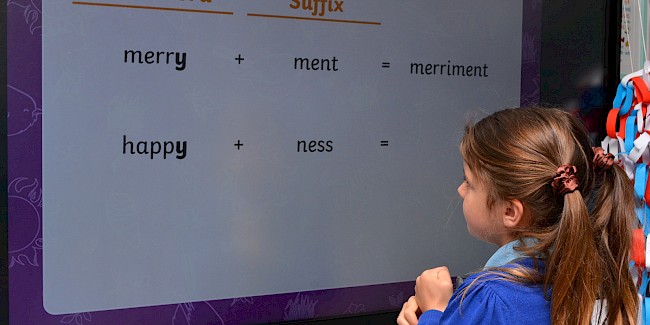Phonics at Moorings Way
At Moorings Way Infant we strive to make every child a reader and share a love of reading within school and at home. To support this early reading is taught through the Read Write Inc programme, which is validated and complies with the DFE requirements as published in July 2022.
During Phonics lessons pupils are systematically taught the phonemes (sounds), how to blend the sounds for reading, and how to segment the sounds in order to write words. Children are taught how to use their phonic skills and knowledge as their first approach to reading, but are also taught how read ‘red words’ which do not completely follow the phonic rules.
Read Write Inc lessons take place daily and are fast paced to engage all children. Pupils are assessed and grouped according to their Phonics knowledge and Phonics Screening is regularly used to ensure that are able to make excellent progress.
English & Handwriting
Reception Year: Handwriting Support for Parents
Order of teaching: Correct letter formation
Curly “c” letters:
c over the top and round
o curly “c” all the way round
a curly “c” up, down, flick
d curly “c” all the way up, down, flick
g curly “c” up, down, give it a tail
q curly “c” up, down, kick
s curly “c” and round the other way
b straight down, up to the middle, round to the bottom
h straight down, up to the middle, over and flick
l straight down, flick
k straight down, up to the middle, loop and a kick
p straight down, up to the top, round to the middle
t down and round, take your pencil off, and across
f over the top, straight down, round the other way and across
j straight down, round, give it a dot
i short down, round, give it a dot
m down, up, over, up, over and flick
n down over and flick
r down, up and over
u down, up, down, flick
y down, up, down, give it a tail
v down, up
w down, up, down, up
x across and across
z straight, across, straight
Year 1 & 2: Handwriting Support for Parents
Order of teaching: Single Letters (Reception Year and Year 1)
c a d g q o
e s f
i l t
u y j k
r n m
h b p
v w x z
Joins Y1/2: Introducing the four handwriting joins
First join; un um ig id ed eg an or ing ung
Second join; ch sh th tl ll ill sli slu ck ack st sti ink unk
Third join; od pg re ve oon oom
Fourth join; wl vl of ff fl flo
Practise the break letters b p g q y j z
Practise capital letters
Joins Y2: Revision
Practise the break letters b p g q y j z
Practise capital letters
Joins Y2: Further Practice of the Four Handwriting Joins
in ine
ut ute
ve vi
ok oh
sh as es (practising two ways of joining the letter s)
ri ru ry (practising joining from the letter r)
oa ad as (practising joining to and from the letter a)
ee ea ed (practising joining from the letter)
ow ov ox (practising joining from the letter o)
ky hy ly (practising joining to the letter y)
ha ta fa (practising joining to the letter a)
od oo og( practising joining from the letter o)
er ir ur (practising joining to the letter r)
ai al at
o you oi
re oe fe (practising the horizontal join to the letter e)
fu wu vu (practising the horizontal join to the letter u)
ot ol ok (practising joining to ascenders)
ai al ow ol (practising all the joins)
